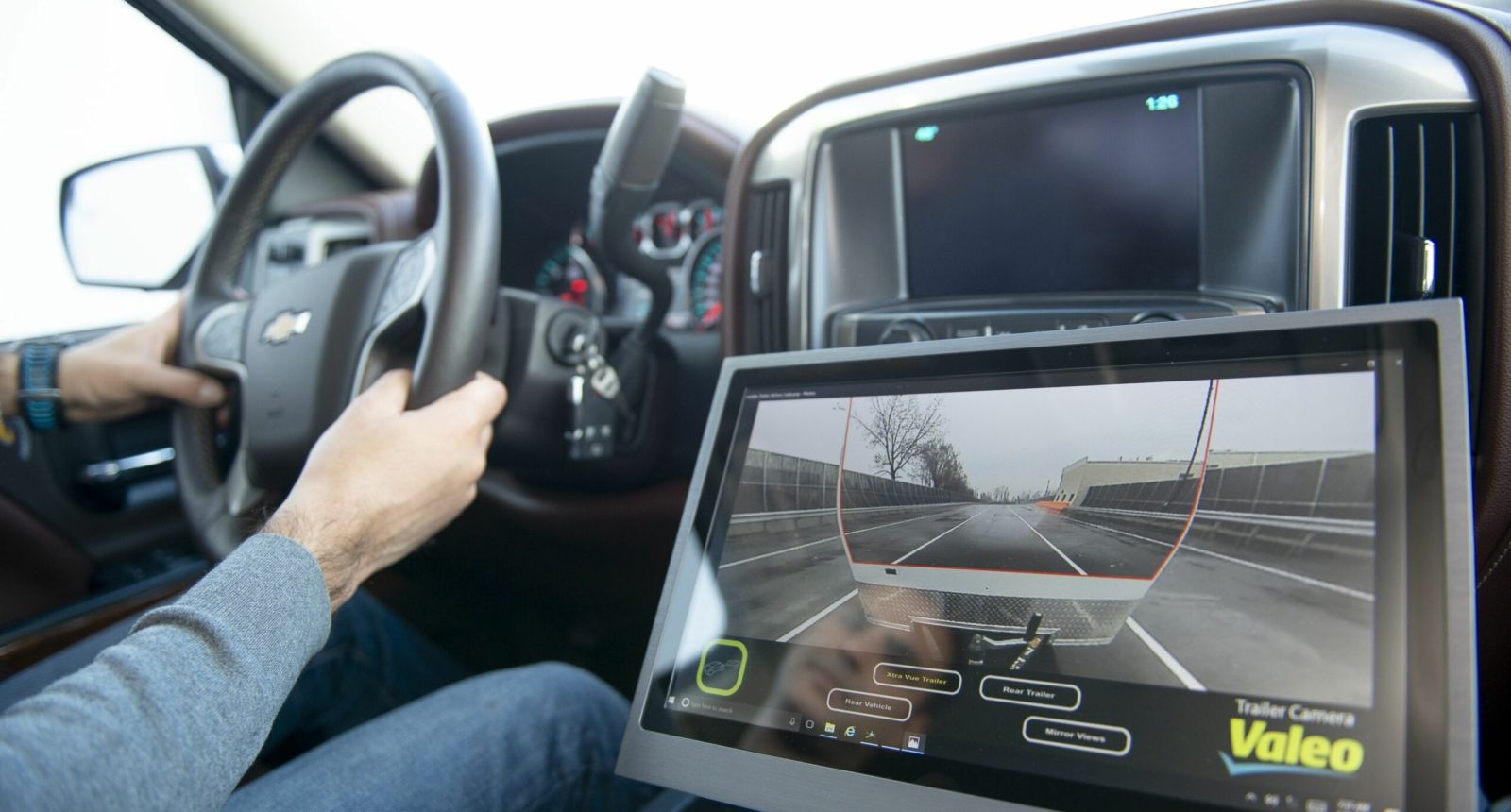Sign up for daily news updates from CleanTechnica on email. Or follow us on Google News!
This is the 10th CES that Valeo has attended — making it one of the longest-attending automotive brands at what used to be a show about big-screen TVs and refrigerators that connected to your Wi-Fi. That said, CES has come a long way since those early days of the EV revolution, and Valeo has been along for the ride.
Valeo’s press conference today began with a nod to the company’s history at CES, played as a bit of a skit, with the company’s CEO and North American director exchanging scripted banter that’s not quite Jo Koy levels of cringe.
They revisited some past CES hits, including the Xtravue trailering camera system that they first showed in 2019 and is now in production …

… but the real “pitch” here was the democratization of ADAS.
Valeo claims that nearly 3 million vehicles were built in 2023 that would qualify as “Level 3 Autonomous vehicles,” globally. Valeo, through its partnerships with Renault, Stellantis, and GM, has a lot to do with that number, and they showed off a new “Smart front camera as central computer” product that mates with 12 ultrasonic sensors, 4 corner radars, front radar, and driver monitoring to deliver high levels of driver assist without the usual high power draw (and associated range hit) that usually comes with those systems.
The company’s presenters went on to talk about how their system can reduce costs and help to democratize the safety benefits of Level 2 and “Level 2+” autonomy … and then they dropped an absolute bombshell.

The presenter claimed, briefly, that Valeo was working on a system of connected components that would enable ADAS-like safety systems on just about any vehicle, including two-wheelers, through their mobile device. (!?)
The slide was swept past as quickly as it was shown, and you can bet that I’ve already emailed their comms team to try to find out more. If that’s true, it would be huge news for cyclists, bikers, and the Iron Butt people.
Finally, Valeo announced its Digital Twin testing environment which uses a virtual world to test out a number of scenarios in an accelerated timeframe, and then uses the results of those tests to develop thermal management solutions for EV batteries that can dramatically improve real-world range and battery longevity.
Last year, we would have called that “a simulator,” but in the post ChatGPT/generative AI world, it’s a digital twin. Got it? Good — let us know what you (and your digital twin!) think of all this Valeo news in the comments section at the bottom of the page.
Have a tip for CleanTechnica? Want to advertise? Want to suggest a guest for our CleanTech Talk podcast? Contact us here.
Our Latest EVObsession Video
https://www.youtube.com/watch?v=videoseries
I don’t like paywalls. You don’t like paywalls. Who likes paywalls? Here at CleanTechnica, we implemented a limited paywall for a while, but it always felt wrong — and it was always tough to decide what we should put behind there. In theory, your most exclusive and best content goes behind a paywall. But then fewer people read it!! So, we’ve decided to completely nix paywalls here at CleanTechnica. But…
Thank you!
CleanTechnica uses affiliate links. See our policy here.
